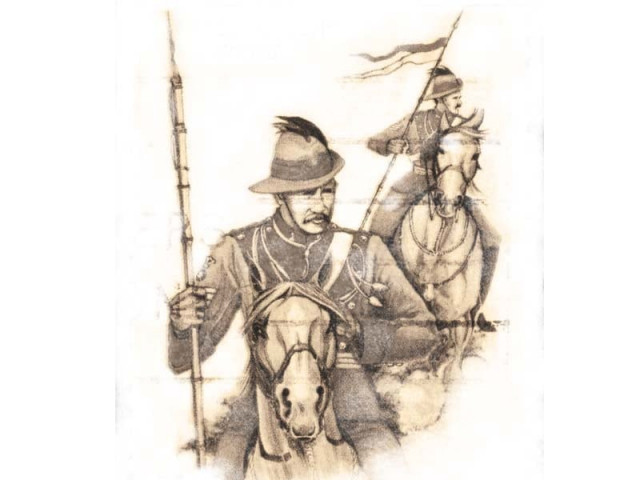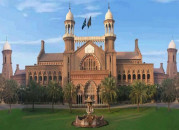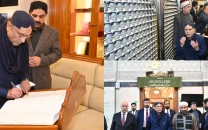Gold and guns: Abdul Qayyum Khan’s journey to the centre of the Frontier
Activist turned politician went from being a die-hard Congress man to the lap of the League, all in search of power.

“Everything is fair in politics. Whether it was the All-India National Congress or the All-India Muslim League, victory was always the destiny for me.”
Those are the words of Abdul Qayyum Khan, clearly defining his political existence, as quoted by Abdur Rauf Seemab. Qayyum is a man known for not only his iron-fist rule over what is now known as Khyber-Pakhtunkhwa or for his role in the fall of the definitive Khudai Khitmatgar movement but for banning his own book.
With strong nationalist undertones, Abdul Qayyum Khan’s Gold and guns on the Pathan Frontier (1945) is a scathing critique of British policy in the erstwhile North West Frontier which eulogises the Khudai Khidmatgar Tehreek (KKT). He banned his own book soon after coming to power in the province in 1947 for a tenure which lasted five years.
The 77-page book was published by Hind Kitabs, Mumbai in 1945 and is divided into eight chapters. It is dedicated to Dr Khan Sahib, the elder brother of the Khan Abdul Ghaffar Khan who is better known as Bacha Khan.
Gold and guns on the Pathan Frontier
The book starts with descriptions of the region and its people and then moves into more choppy political waters. As it dresses down the British, the book also lays into the Muslim League all the while taking great pain to explain the KKT and praise the Khan brothers.
Qayyum’s disdain for the British Raj is noted in what he calls their imperial hunger for the land, a hunger which forced Afghanistan to cede sovereignty over the tribal belt, which the Raj then annexed into India, a policy of “vivisection and emasculation of Afghanistan.”
During the 1857 uprising, Gold and guns goes on to state, it was the Pakhtuns who fought next to the British but the Raj locked them out of every scheme which was introduced in India. Qayyum also criticises the British for their portrayal of the Pakhtuns.
“It was repeatedly [stated] that the Pathan was a mad fanatic, almost a savage animal and if for no other reasons, at least for the sake of his neighbors in the Indus valley, he must be subdued,” he writes.
The policy of the British divided the region into tribal areas and settled districts, which Qayyum again terms as “vivisection.”
He writes the British appointed military officers in charge of the Frontier’s districts in addition to introducing repressive laws like the Frontier Crimes Regulations (FCR). Section 40 of the FCR was heavily used against those suspected of having links with the Freedom Movement, reads the book.
Qayyum notes before the start of World War Two, the bulk of the Indian Army was maintained in various Frontier garrison towns called cantonments, recruiting heavily from the Pakthuns. Simultaneously, large funds were at the disposal of political officers to “civilise” the tribes by corrupting them, Qayyum stipulates.
“Gold and guns have been used in great profusion to tame and subdue these tribes,” he sums up the Raj’s policy, from which his book takes its name.
All shades of grey
In order to understand the journey of Gold and guns from being the first-of-its kind English literature on the Khidmatgar movement to its own author banning it, Qayyum’s own journey from the Khilafat movement to the KKT to the Congress and then to the Muslim League must be seen for context.
Syed Minhajul Hassan in his unpublished PhD dissertation, NWFP Administration under Abdul Qaiyum Khan, 1947-53 (2003) notes Qayyum’s parents had migrated to Peshawar from Kashmir, marking Qayyum’s ethnic roots. Qayyum was born in Nagar village of Chitral on July 16, 1901 where his father was serving as an assistant on behalf of the British Indian government.
Politically active since his time at Islamia College, Qayyum quit studies for a brief period, presumably distracted by the non-cooperation movement. By 1921, he was nominated to the position of general secretary of the movement in the province. However, he resumed studies after he enrolled at the London School of Economics from where he graduated with a degree in economics and political sciences. Before he returned to Peshawar, Qayyum had been called to the bar at Lincoln’s Inn.
After he lost the Frontier Legislative Assembly elections as an independent in 1932, Qayyum joined the Congress Party. He lost elections for the assembly again in 1936 from the party’s platform, but his rise within the party was notable.
However by 1945, when many Congress leaders were incarcerated over the Quit India Movement, Qayyum and the party had fallen out of love.
According to Hassan, it was Qayyum’s association with Bhullabai Desai, a Congress leader who had pushed for a Congress-League interim government after World War 1, which caused the party’s disillusionment with the politician.
It was around this time that Qayyum penned his 77-page ode to the Khan brothers and joined the Muslim League, a party he rages against in Gold and guns. Even though Qayyum uses the book as a way to patch things with the Congress, when the latter denied him the party ticket to contest the 1946 elections for the Central Legislative Assembly, Qayyum saw the moment opportune and switched to the League.
In his book, Qayyum calls the Muslim League a collective of reactionary and opportunistic groups looking to seize power by raising alarm over “Islam in danger.” Through this, he says, the League also secured its class interests. On the other hand, the “Pride of the place must go to Khan Brothers,” he writes of Bacha Khan and Dr Khan Sahib.
Rajmohan Ghandi in his Ghaffar Khan, the nonviolent badshah of Pakhtuns explains Qayyum’s departure not as disloyalty but a sort of political realism. He emphasizes the 1946 elections proved Qayyum correct in his calculation that the Punjab Unionist and KKT too would have to acknowledge the rising tide of “Political Islam”.
Hassan’s dissertation adds that Dr Khan Sahib formed the provincial government after the Congress won a majority in the Frontier Legislative Assembly elections in 1946 and his government was dismissed in 1947 by then Governor-General Jinnah by reinstating Section 93 of the Interim Constitution of Pakistan.
According to the dissertation, Qayyum played an important role in this by meeting Jinnah and convincing the governor-general that Dr Khan Sahib was planning to declare the Frontier, “Pakhtoonistan” an autonomous state under Pakistan.
Qayyum was then appointed the chief minister of the Frontier and promptly banned his book.
Analyst Khadim Hussain views the ban as an attempt to weaken the KKT’s ideology, as soon after taking over, Qayyum crackdown against the Khidmatgar workers to break their organisational infrastructure.
People called him a turncoat and probably to avoid that epithet, he banned his own book, said columnist Zalan Momand. “The ban on his book was never lifted as it is the case with most of the banned books in Pakistan.”
Published in The Express Tribune, August 1st, 2014.



















COMMENTS
Comments are moderated and generally will be posted if they are on-topic and not abusive.
For more information, please see our Comments FAQ